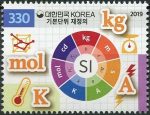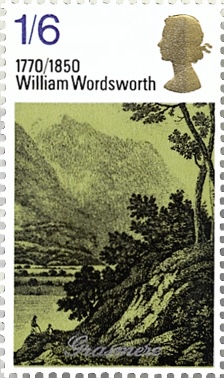(Explore the history and landscape of the United States with us as we approach the 250th anniversary of the American Revolution and American Independence. Get out your homeschool atlas and almanac and follow along!)
Oregon is our homeschool state-of-the-week, so why not spend a few minutes today with your students learning about one of Oregon’s most important historic places: the Crater Lake National Park, which preserves the spectacular landscape of Mount Mazama, a large extinct volcano.
![[Homeschool American Heritage]](https://upload.wikimedia.org/wikipedia/commons/thumb/8/8d/Above_Crater_Lake_%28cropped%29.jpg/1280px-Above_Crater_Lake_%28cropped%29.jpg)
“Crater Lake inspires awe. Native Americans witnessed its formation 7,700 years ago, when a violent eruption triggered the collapse of a tall peak. Scientists marvel at its purity—fed by rain and snow, it’s the deepest lake in the USA and one of the most pristine on Earth. Artists, photographers, and sightseers gaze in wonder at its blue water and stunning setting atop the Cascade Mountain Range.”
A massive eruption occurred about 7,700 years ago. It was followed by ejections of volcanic matter through fractures, in an oval shape around the mountain. These events weakened the mountain’s structure, and caused the central portion of Mount Mazama to collapse inward. The result was an 5–6 mi diameter and 0.7 mi deep caldera.
Soon after the caldera formed, eruptions from new vents built the base of Wizard Island, and over several hundred years, rain and snow partially filled the caldera. Meanwhile, Wizard Island continued to grow and three other volcanoes formed underwater. The final eruption was on the east flank of Wizard Island about 4,800 years ago.
Evaporation and seepage are equal forces which keep Crater Lake from filling beyond an average depth of 1,943 ft or 4.9 trillion gal of water. About 34 billion gal are gained and lost each year. The yearly average snowfall on Crater Lake, as of 2020, is 42 ft with an average yearly precipitation (rain and melted snow) of 67 in. Average snowfall has been decreasing since the 1930’s when it was recorded at 51 ft.
Widely known for its rich blue color and extreme clarity, Crater Lake is the deepest lake in the United States. It is one of the top ten deepest in the world. Unlike other Cascade Mountain lakes, Crater Lake rarely freezes over in the winter due to the heat content of the enormous water volume. (nps.gov)
You can find a wealth of additional information about the Park’s history, landscape, location(s), and visitor facilities on the webpage for Crater Lake National Park from the National Park Service, and also on the Park’s page on Wikipedia.
![[Homeschool American Heritage]](https://upload.wikimedia.org/wikipedia/commons/thumb/e/ec/Crater_Lake_winter_pano.jpg/1280px-Crater_Lake_winter_pano.jpg)
Explore America’s National Parks, National Historical Parks, National Historic Sites, National Monuments, and more via Wikipedia and via the U.S. National Park Service’s website today.
What historical American treasures are you and your students exploring in your homeschool this Leo Term? 🇺🇸
❡ The great globe itself: This is one of our regular Homeschool Geography posts featuring important natural and historical sites in the United States. Print your own copy of our River Houses American Heritage Calendar and follow along with us, and add your name to our weekly mailing list to get great homeschool teaching ideas delivered right to your mailbox all through the year. 🌎
❡ We set to-day a votive stone: If you want a great long-term history and geography project for your homeschool, explore the Historical Marker Database online (hmdb.org) and make a plan to find all the markers that are listed in your local area. Add any new ones you know of that are missing, and add new photos or descriptions for the ones already included. Your students will gain a better appreciation for your local community and will learn a wealth of new information about history and geography. 🏛
❡ Print this little lesson: Down at the bottom of this post you’ll find a special “Print” button that will let you create a neat and easy-to-read copy of this little lesson, and it will even let you edit and delete sections you don’t want or need (such as individual images or footnotes). Give it a try today! 🖨
❡ Books in the running brooks: You can always turn to your River Houses atlas and almanac for more information about any of our homeschool states-of-the-week. The almanac has detailed profiles of all the U.S. states and territories, and the endpapers of the atlas are indexes that will show you where all of the individual national and regional maps may be found. 📚
❡ Homeschool calendars: We have a whole collection of free, printable, educational homeschool calendars and planners available on our main River Houses calendar page. They will help you create a light and easy structure for your homeschool year. Give them a try today! 🗓
❡ Support our work: If you enjoy our educational materials, please support us by starting your regular Amazon shopping from our very own homeschool teaching supplies page. When you click through from our page, any purchase you make earns us a small commission at no extra cost to you. Thank you for helping us to keep going and growing! 🛒
❡ Join us! The aim of the River Houses project is to create a network of friendly local homeschool support groups — local chapters that we call “Houses.” Our first at-large chapter, Headwaters House, is now forming and is open to homeschoolers everywhere. Find out how to become one of our founding members on the Headwaters House membership page. 🏡




